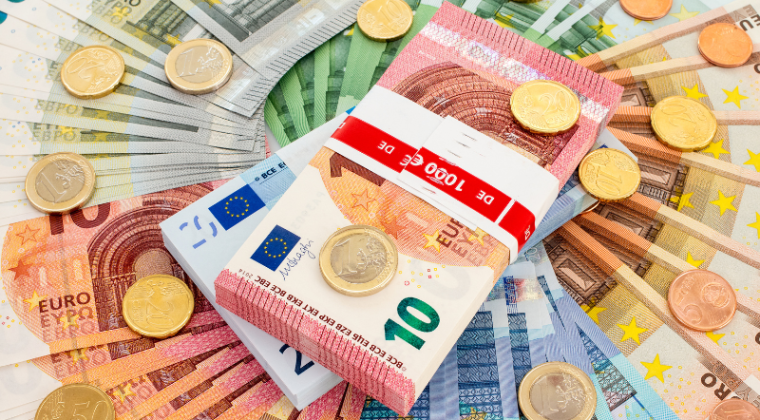-
- Plateformes de trading
- Application PU Prime
- MetaTrader 5
- MetaTrader 4
- PU Copy Trading
- Trader Web
- PU Social
-
- Conditions de Trading
- Types de compte
- Spreads, Coûts et Swaps
- Dépôts et Retraits
- Frais et Charges
- Heures de Trading

Key Takeaways:
*The euro outperformed among safe-haven currencies like the Yen and Swiss Franc amid heightened geopolitical risk.
*Eyes on today’s eurozone PMI readings to gauge the euro’s strength.
Market Summary:
The euro has displayed unexpected resilience in recent sessions, outperforming traditional safe-haven currencies such as the Japanese yen and Swiss franc despite rising geopolitical tensions in the Middle East. This strength reflects investor confidence in the Eurozone’s relative economic stability and the European Central Bank’s (ECB) clear policy trajectory.
Unlike the Federal Reserve and the Bank of Japan, which continue to send mixed signals on future rate moves, the ECB has laid out a more predictable path—signaling potential rate cuts starting in June. Combined with inflation levels converging toward the ECB’s 2% target and a steady macroeconomic backdrop, the euro has become an increasingly attractive alternative in times of market turbulence.
Middle East Tensions Under Watch
The U.S. strike on Iranian nuclear sites has heightened the risk of escalation, particularly with the possibility of retaliatory action that could disrupt crude shipments through the Strait of Hormuz. While such events typically trigger flows into safe havens, the euro’s newfound stability has allowed it to weather the storm better than expected.
Key Catalysts Ahead
Today’s Eurozone PMI data could provide the next directional cue. A stronger-than-expected print may reinforce the euro’s gains, particularly against peers facing policy or growth uncertainty. However, a sharp escalation in the Middle East could still test the euro’s resilience, especially if energy prices spike and pressure European growth.
Outlook:
While geopolitical risks remain elevated, the euro’s appeal lies in policy transparency and relative economic steadiness. Unless global risk sentiment deteriorates dramatically, the single currency may continue to outperform more reactive safe-haven counterparts like the yen.
The euro has extended its rally against the Japanese yen in June, with EUR/JPY climbing over 3.5% to reach its highest level since August 2023. The pair is now testing a critical resistance at 168.75, where markets are eyeing a potential technical retracement in the short term. However, a sustained breakout above this level could open the door for a move toward the all-time high at 175.42.
Momentum indicators underscore the bullish bias. The Relative Strength Index (RSI) has entered overbought territory, reflecting strong buying pressure, while the MACD remains elevated and shows signs of a bullish divergence—both suggesting that upward momentum remains intact.
While near-term consolidation is likely near current levels, a decisive break above 168.75 could trigger fresh buying interest, positioning the pair for a potential test of historical highs. Traders will be closely watching ECB and BoJ commentary for further directional cues.
Resistance levels: 168.75, 172.70
Support levels: 164.65, 161.22

Tradez le Forex, les indices, Métaux et plus encore avec des spreads faibles et une exécution ultra-rapide.
Inscrivez-vous pour un compte réel PU Prime grâce à notre procédure simplifiée.
Approvisionnez facilement votre compte grâce à un large éventail de canaux et de devises acceptées.
Accédez à des centaines d’instruments avec les meilleures conditions de trading.